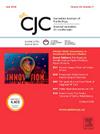Mid-term Outcomes of Frozen Elephant Trunk for Chronic Aortic Dissection
IF 5.8
2区 医学
Q1 CARDIAC & CARDIOVASCULAR SYSTEMS
引用次数: 0
Abstract
Background
The aim of the study was to analyse the mid-term outcomes of the frozen elephant trunk (FET) procedure for chronic aortic dissection (СAD).
Methods
From March 2012 to December 2022, 123 FET procedures were performed in patients with acute and chronic aortic dissection (CAD) as well as aortic aneurysm. Fifty-eight patients with CAD were eligible for study. CAD patients were divided into 2 groups: type A (n = 32) and type B (n = 26). Pre-, intra-, and postoperative data were collected retrospectively from electronic patient records, with a median follow-up period of 21.5 months (range 1-96 months).
Results
The overall 30-day mortality in CAD patients was 10.3%. The overall survival rate for the entire cohort was 66.5 ± 7.9%, and for type A and type B patients, respectively, it was 77.6 ± 8.1% and 53 ± 1.3% (P = 0.229). Distal stent graft–induced new entry developed in 2 (3.4%) patients. Freedom from composite outcome (death or/and distal aortic re-intervention) for the entire cohort was 56.8 ± 9.8%, and for type A and type B patients was 66.5 ± 1.2% and 44.8 ± 1.4%, respectively (P = 0.181). The incidence of stroke was 1.7%. Two patients (3.4%) had signs of spinal cord ischemia. Respiratory failure occurred in 14 patients (23.1%). The rate of dialysis was 15.5% (n = 9). The chest re-exploration for bleeding rate was 5.2% (n = 3).
Conclusions
Early and late outcomes (death and/or distal aortic re-intervention) after the FET in CAD are tolerable without difference between type A and type B.

冷冻象鼻治疗慢性主动脉夹层中期疗效观察。
背景:本研究的目的是分析冷冻象鼻(FET)手术治疗慢性主动脉夹层的中期结果(СAD)。方法:2012年3月至2022年12月,对123例急慢性主动脉夹层及主动脉瘤患者进行FET手术。55例慢性主动脉夹层(CAD)患者符合研究条件。CAD患者分为2组:A型32例,B型26例。术前、术中和术后数据回顾性收集电子病历,中位随访时间为21.5个月(范围1-96)。结果:冠心病患者30天总死亡率为10.3%。整个队列的总生存率为66.5±7.9%,A型和B型患者的总生存率分别为77.6±8.1%和53±1.3% (P = 0.229)。2例(3.4%)患者出现远端支架诱导的新入骨。整个队列的复合结局(死亡或/和主动脉远端再介入)的自由度为56.8%±9.8%,A型和B型患者的自由度分别为66.5±1.2%和44.8±1.4% (P = 0.181)。卒中发生率为1.7%。2例(3.4%)患者有脊髓损伤症状。14例(23.1%)发生呼吸衰竭。透析率为15.5% (n=9)。胸部再探查出血率为5.2% (n=3)。结论:冠心病FET术后的早期和晚期结局(死亡或/和主动脉远端再介入)在A型和B型之间没有差异。
本文章由计算机程序翻译,如有差异,请以英文原文为准。
求助全文
约1分钟内获得全文
求助全文
来源期刊

Canadian Journal of Cardiology
医学-心血管系统
CiteScore
9.20
自引率
8.10%
发文量
546
审稿时长
32 days
期刊介绍:
The Canadian Journal of Cardiology (CJC) is the official journal of the Canadian Cardiovascular Society (CCS). The CJC is a vehicle for the international dissemination of new knowledge in cardiology and cardiovascular science, particularly serving as the major venue for Canadian cardiovascular medicine.
 求助内容:
求助内容: 应助结果提醒方式:
应助结果提醒方式:


